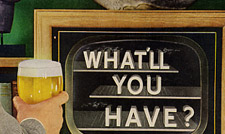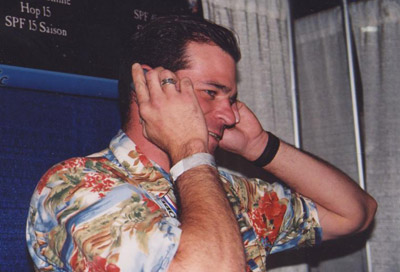. . . and that’s OK.
The Brew Blog reports that Miller’s “Take Back the High Life” campaign begins tonight. With the ads Miller is positioning Miller High Life as the best beer value.
Miller High Life brand director Tom McLoughlin sees the campaign fitting in with a countertrend to the trading up movement.
“We think we’ve tapped into a cultural insight, which we see could be a fruitful area. You write about it all the time: trading up. Consumers are reaching a breaking point on that, in terms of, are we trading up on everything?”
Of course not.
It’s been nearly two years since I talked with Michael Silverstein, author of Trading Up: Why Consumers Want New Luxury Goods, for a trade publication. At the time I wrote:
Reviews of the book are often paired it with “Living It Up: Our Love Affair with Luxury” by James B. Twichell. Twichell writes, “One can make the argument that until all necessities are had by all members of a community, no one should have luxury. More complex still is that, since the 1980s, the bulk consumers of luxury have not been the wealthy but the middle class, your next-door neighbors and their kids.”
That’s good for brewers when beer is viewed a New Luxury. It’s bad when beer is not, because one of the premises of “Trading Up” is that consumer spending is polarizing. In order to trade up in a category she really cares about, an avid cyclists might save money by trading down in some that don’t matter to her — like her brand of toothpaste or beer.
The implication is manufacturers of products that are perceived as commodities have a problem.
Do the new Miller ads address that? Here’s how Brew Blog describes the ads: “Deliverymen repossess cases of Miller High Life from establishments that charge too much — preventing people from living the High Life. In one spot they descend on a bistro that charges an eye-popping amount for a hamburger.”
This means? Apparently that that the hamburger is overpriced so everything there must be. The food and drink aren’t worth more; they just cost more.
Or maybe that if you spend too much on hamburgers who won’t be able to afford your fair share of Miller High Life and will have to drink something cheaper. Quite honestly, it’s not clear to me, but then I don’t know what there is cheaper (and don’t feel the need to tell me).
In any event: Hogwash.
Let’s be realistic. Most beer drinkers consider beer a commodity, not worth paying more for than the brand currently on sale at the grocery store. I’m OK with that, just as the fact that some people don’t want to “trade up” to more complex flavors – or drink beer at all.
However, I am bothered by a commercial that implies that those of us who pay more for beer aren’t getting a better value than, well, Miller High Life.
 The beer vs. wine debate goes to the
The beer vs. wine debate goes to the 